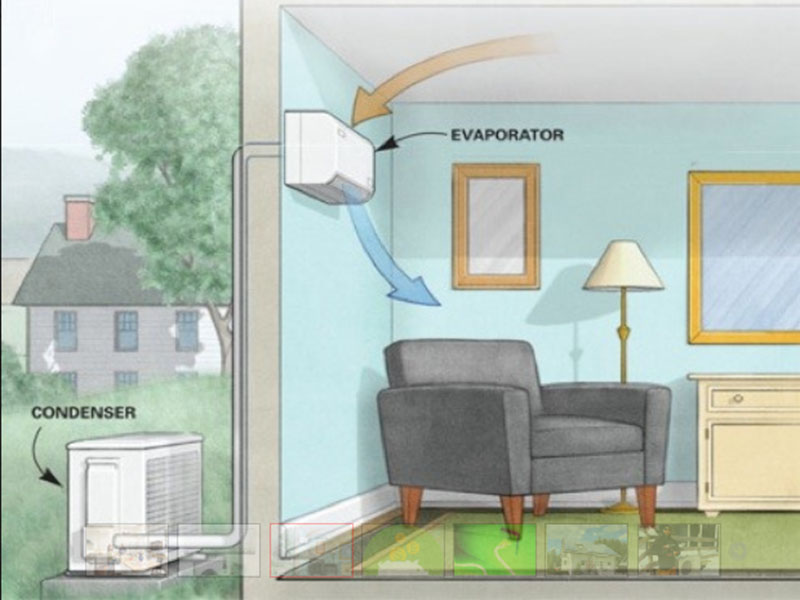Heat pumps are awesome – everyone says that right? But they’re also kind of… magical? Not really, of course. But the technology that drives heat pumps is mysterious unless you’re an expert in physics AND heating and cooling. And most literature on the Internet either wants you to buy a heat pump, or wants you to NOT buy a heat pump and stick to oil or propane for heat. So we decided to demystify heat pumps for everyone and answer questions straight up so you can make your own informed buying decisions. Are you ready to learn? Here we go:
What is a heat pump?
A heat pump is a standalone, two-component appliance that uses refrigeration technology and electricity to provide heating and cooling for homes, businesses and other applications. A heat pump has two components – a condenser unit that most often sits outside of a home that produces the heating or cooling, and an indoor unit that typically sits on a wall and passes hot or cool air into the home; because the condenser and air handler are separated or “split” by refrigerant line, heat pumps may sometimes be referred to as “mini-splits.” Heat pumps offer extraordinarily high efficiency rates, as well as the opportunity to provide heating and cooling without needing duct work in the home; because duct work is not required, you may hear heat pumps referred to as “ductless.”
How does a heat pump work?

In the simplest terms, a heat pump uses electricity and refrigerant to move heat from one location to another.
To provide heat, a heat pump works by extracting heat from the air outside of your home and transferring it to refrigeration coolant – the coolant is then compressed, which increases the temperature significantly; the coolant is then moved to the indoor unit of the heat pump, which then passes air over the hot coolant, increasing its temperature to accommodate the thermostatic call for heat inside the home.
A heat pump consists of two major parts – a “wall cassette” that is mounted inside your home, and a condenser unit that stays on the outside of your home. The heat pump’s wall cassette and condenser units are connected by refrigerant line.
The indoor wall cassette is thermostatically controlled to provide you with both heating and cooling. When there is a call for heat, the heat pump will turn on the fan in the outdoor unit to begin the process of extracting heat from the air outside of your home. The refrigerant line carries this heat to the indoor unit, which then transfers the heat to the air inside of your home via a fan inside the wall cassette. In cooling mode the process is reversed, transferring heat out of your home and returning cool air to the inside.
Remark:
If you‘re interesting in heat pump products,please feel free to contact OSB heat pump.
Some of the articles are taken from the Internet. If there is any infringement, please contact us to delete it.

